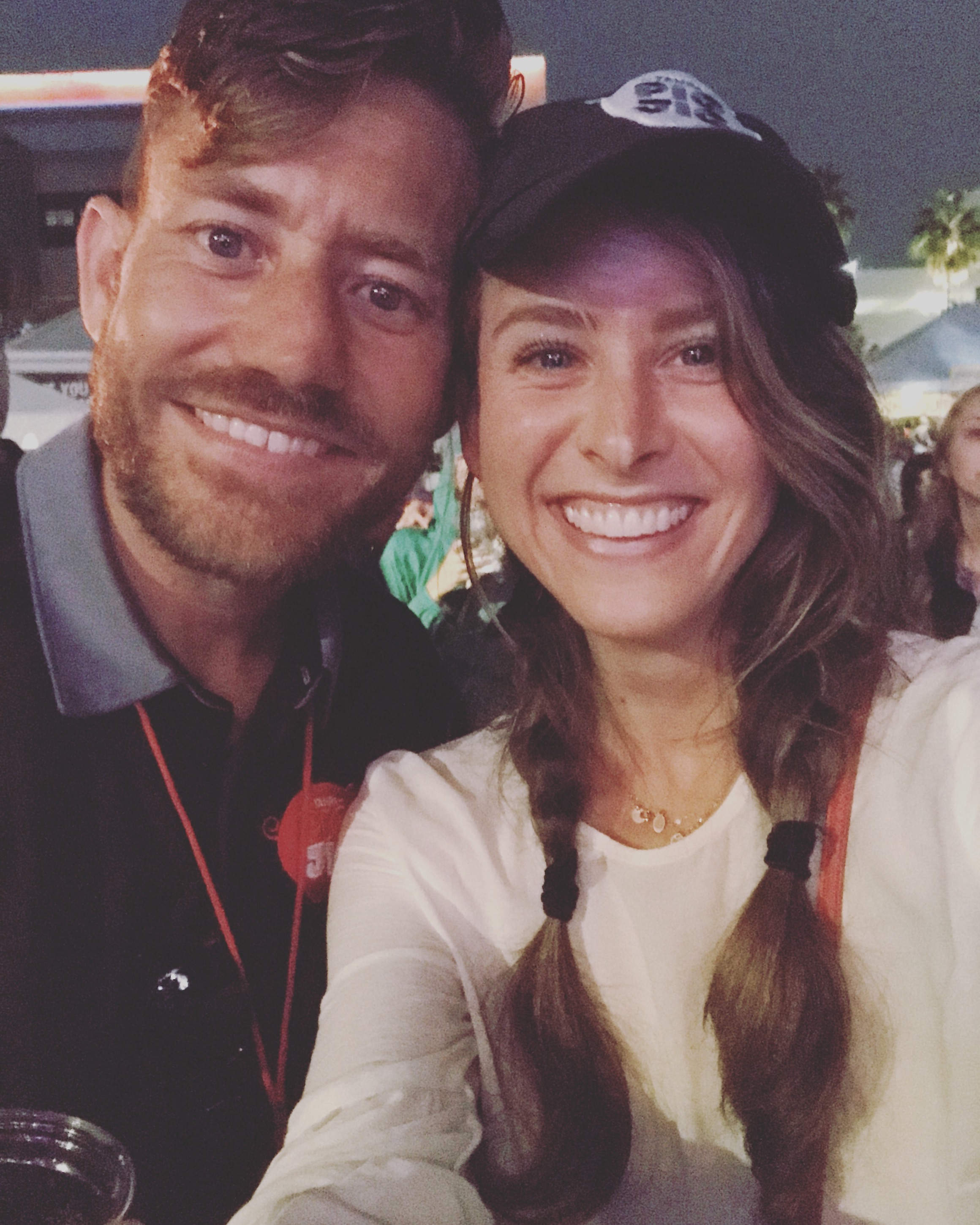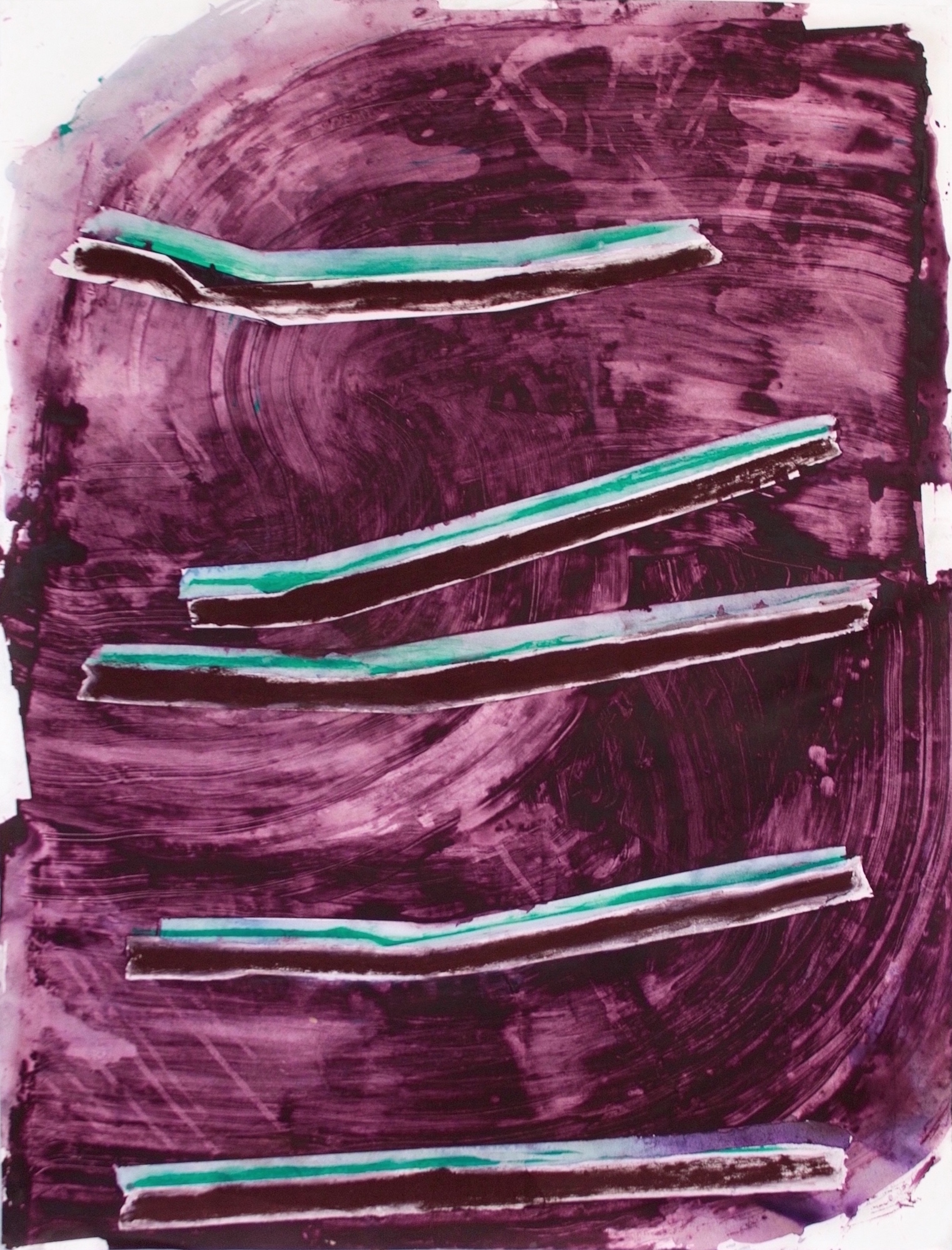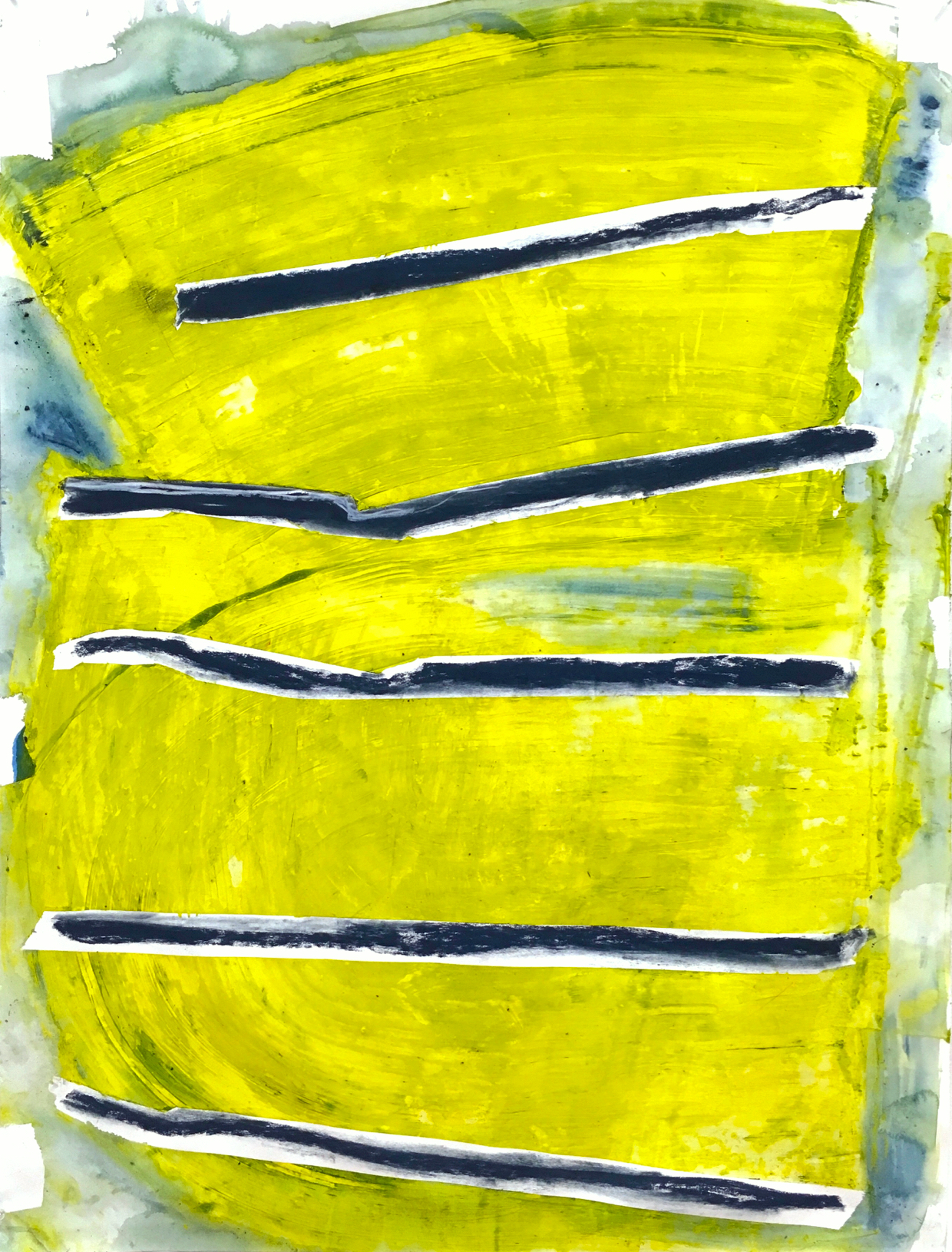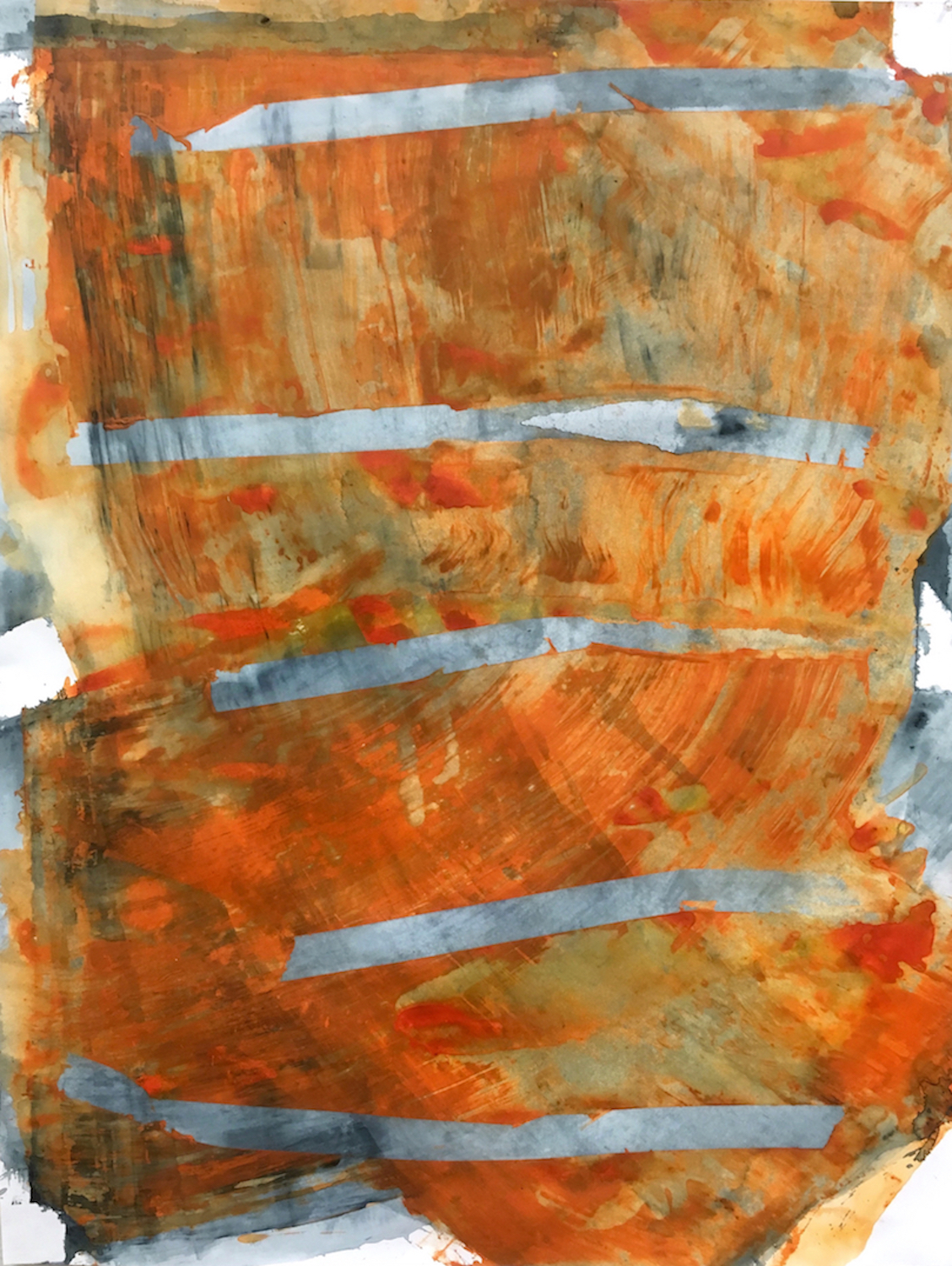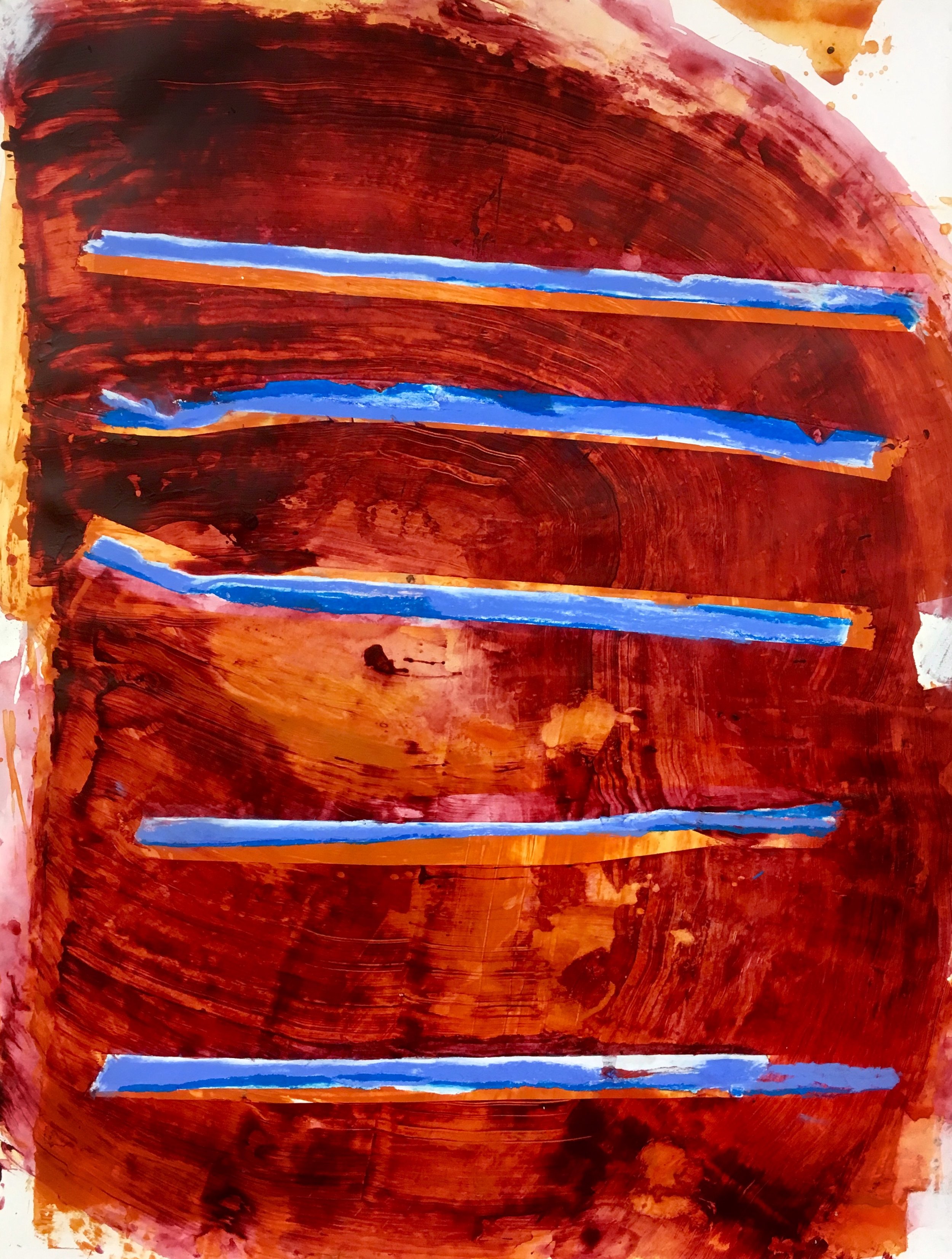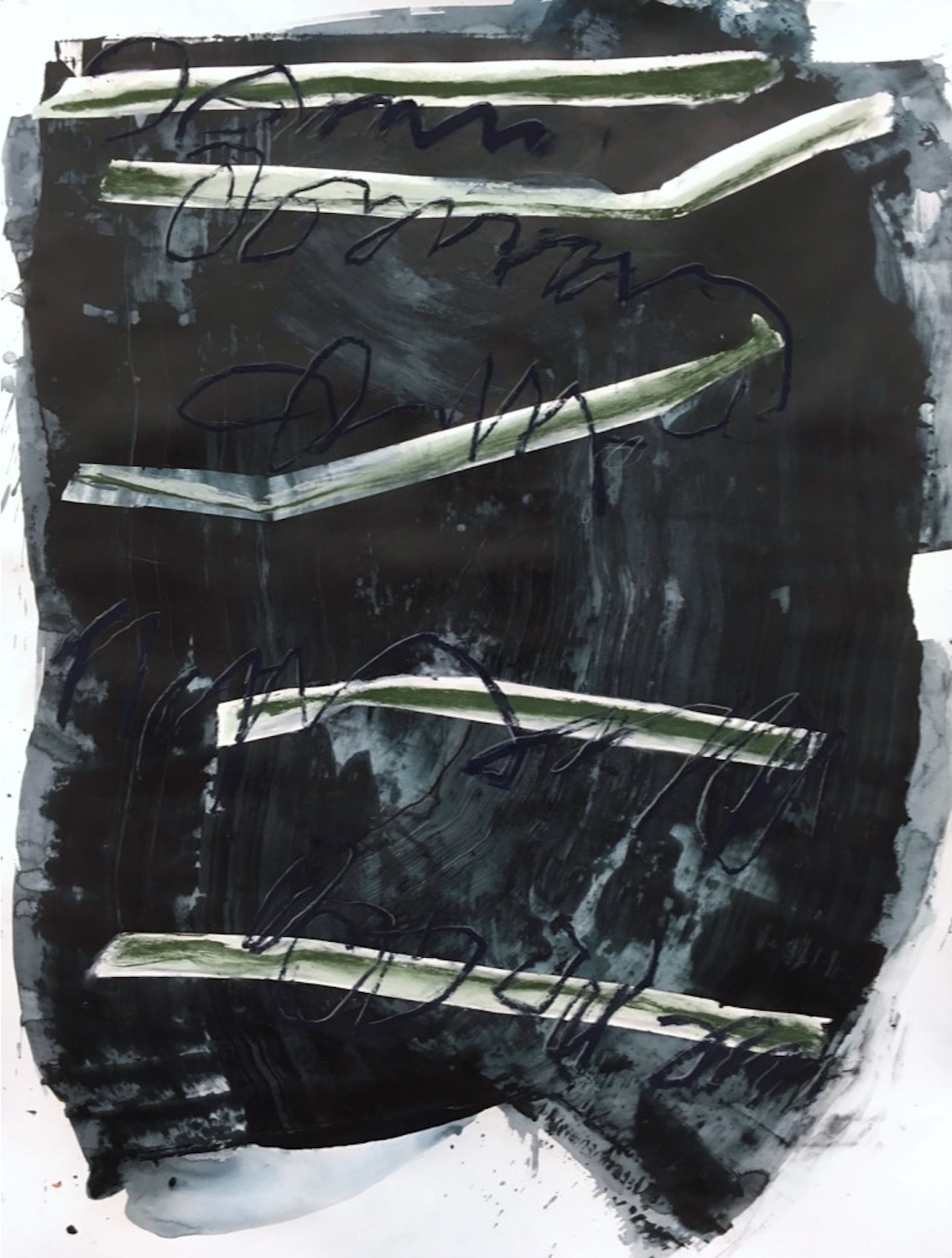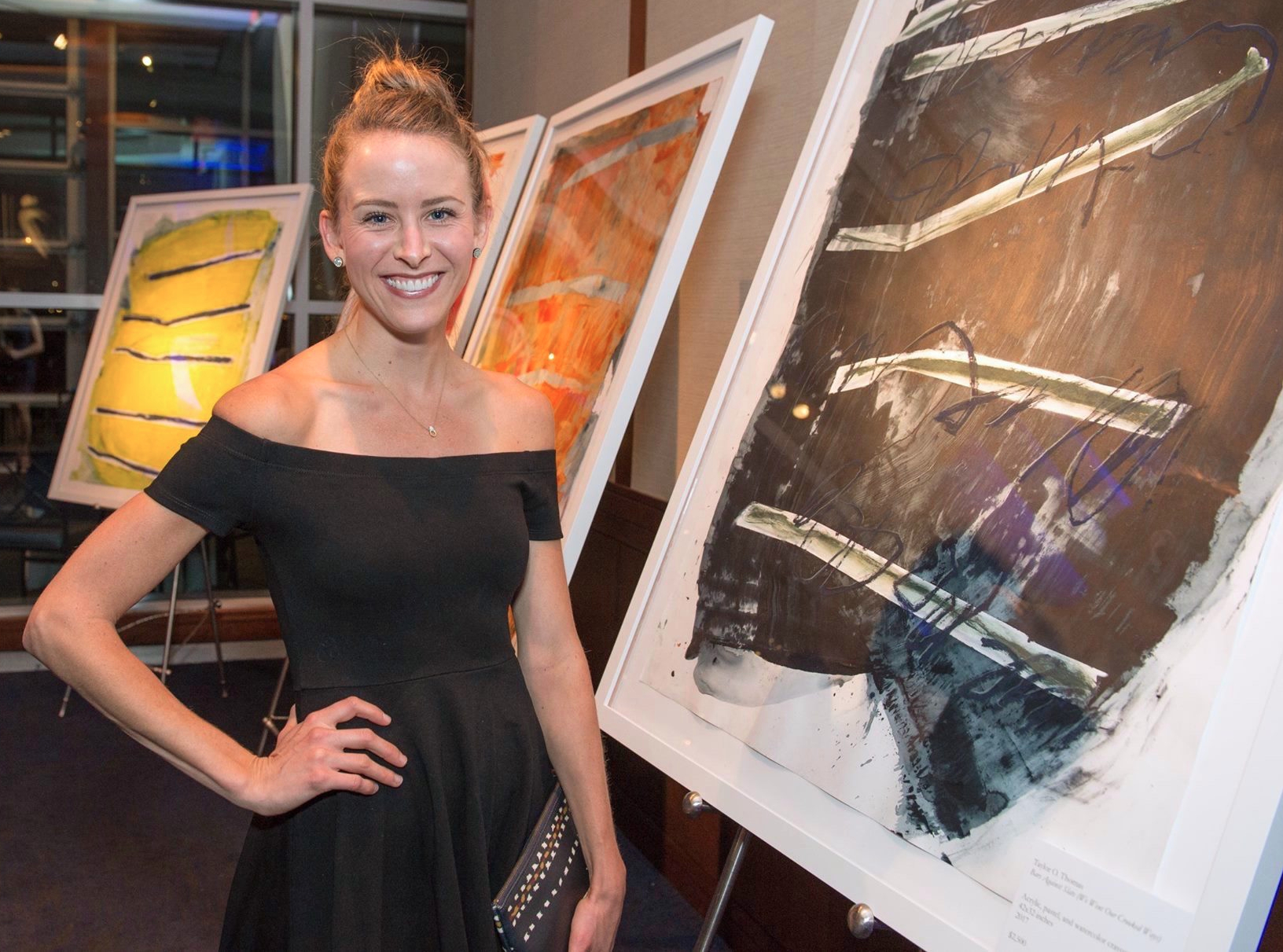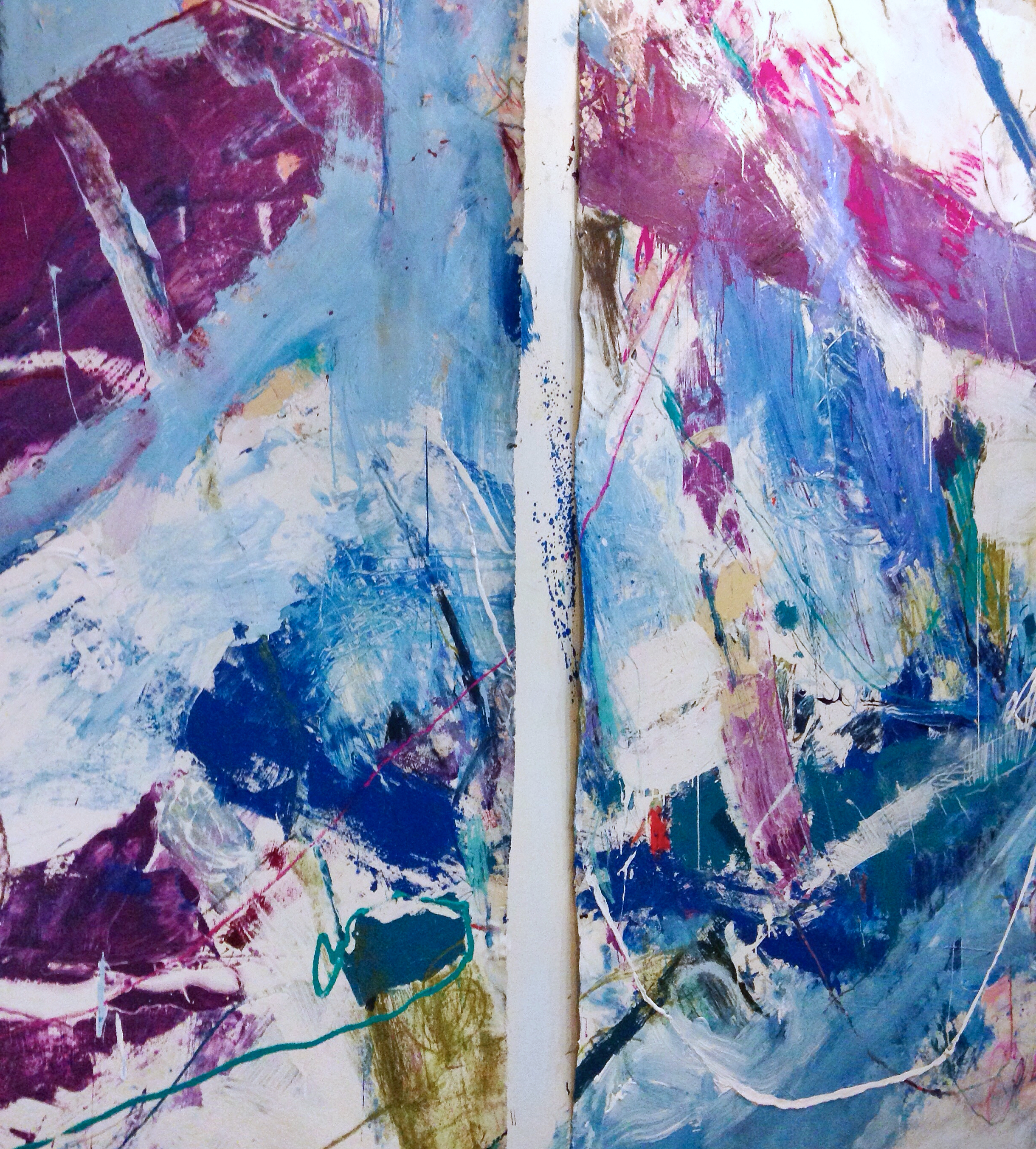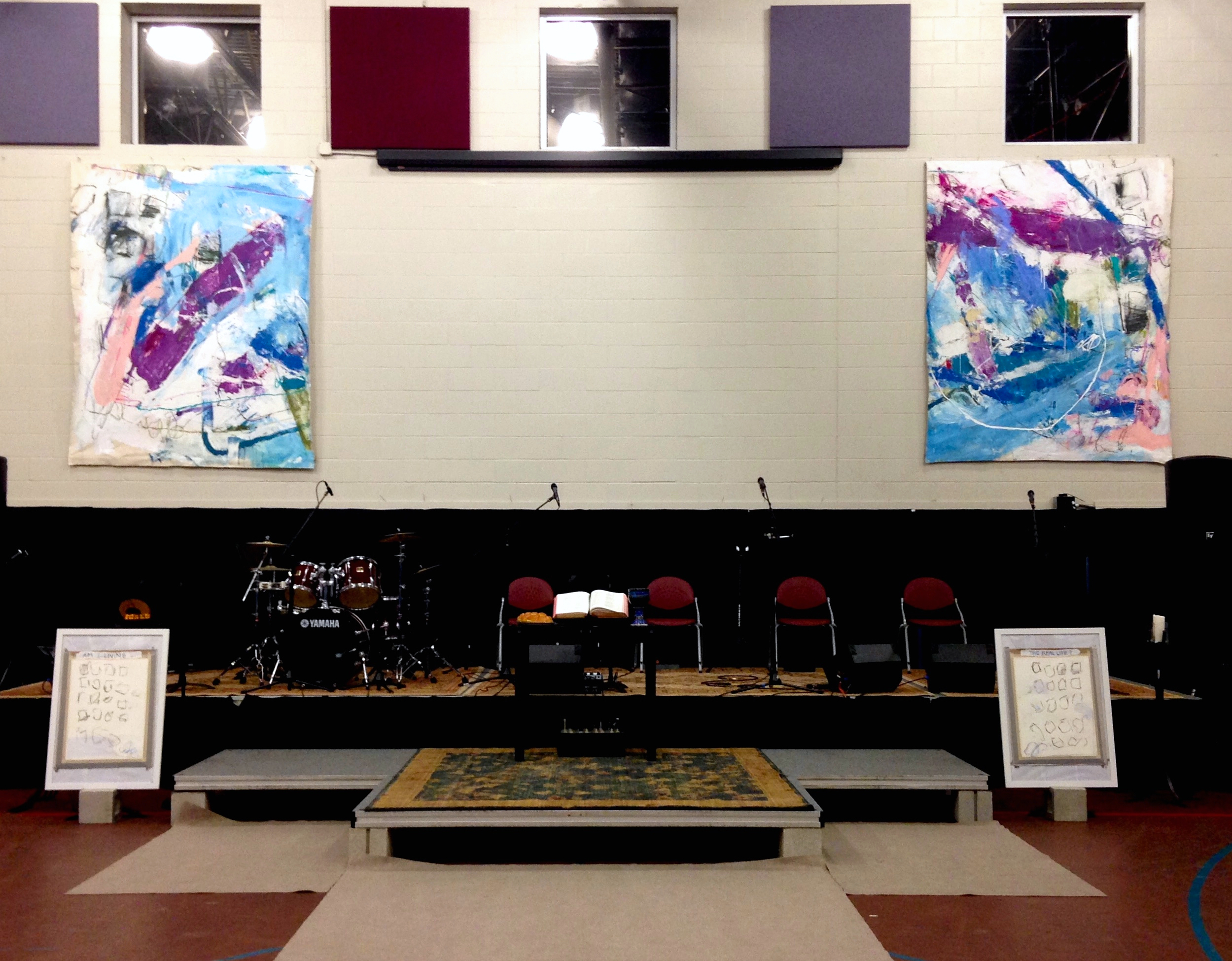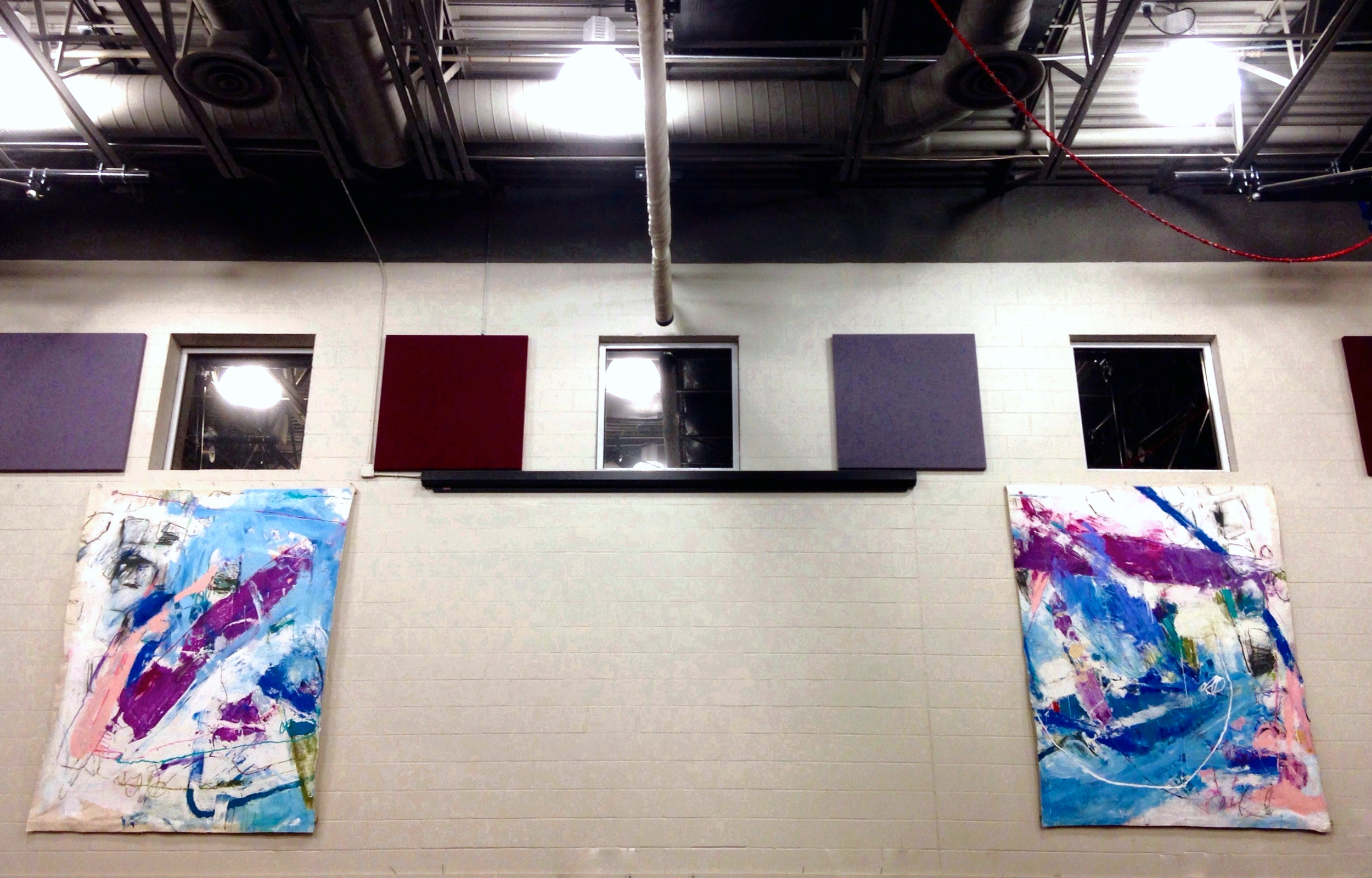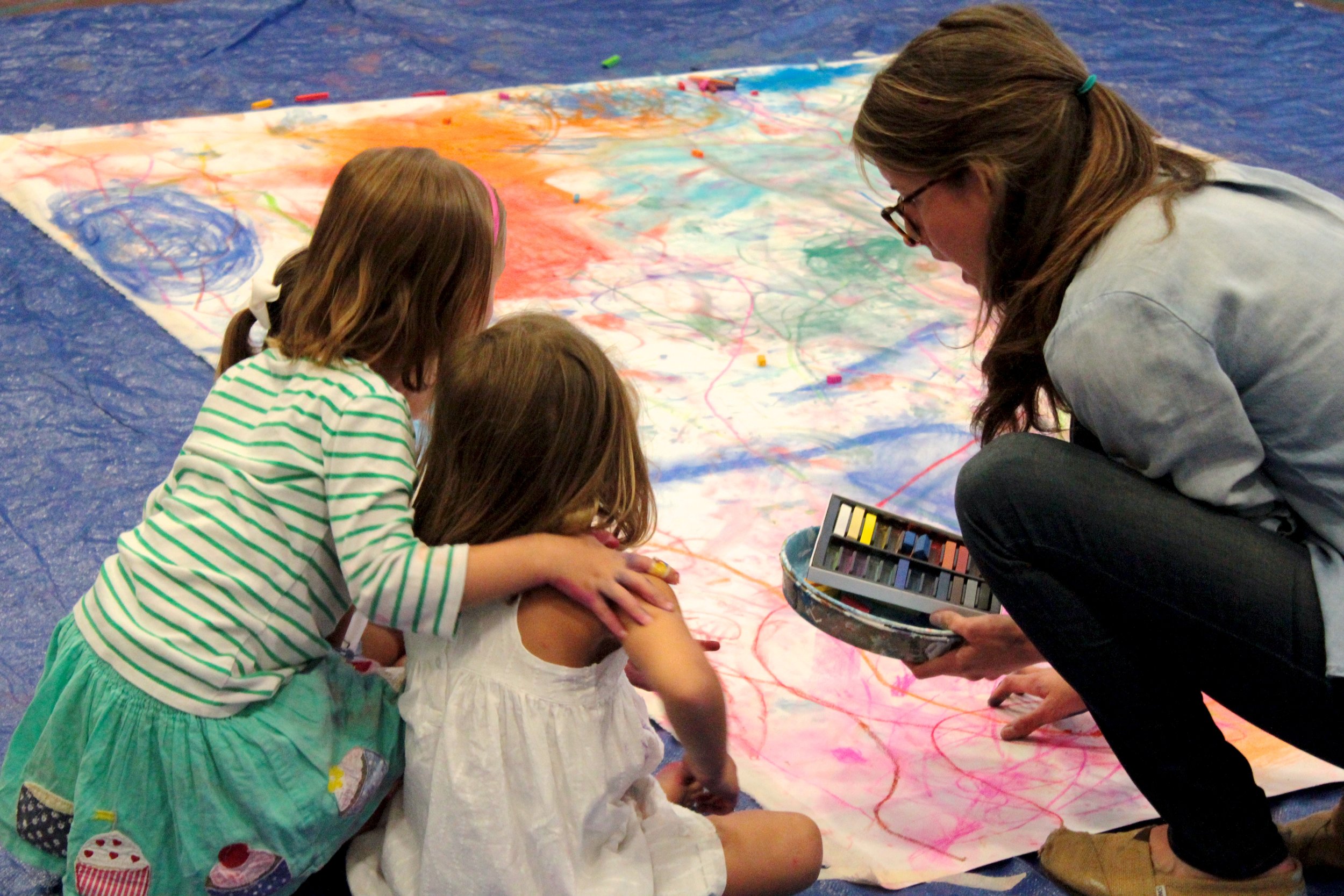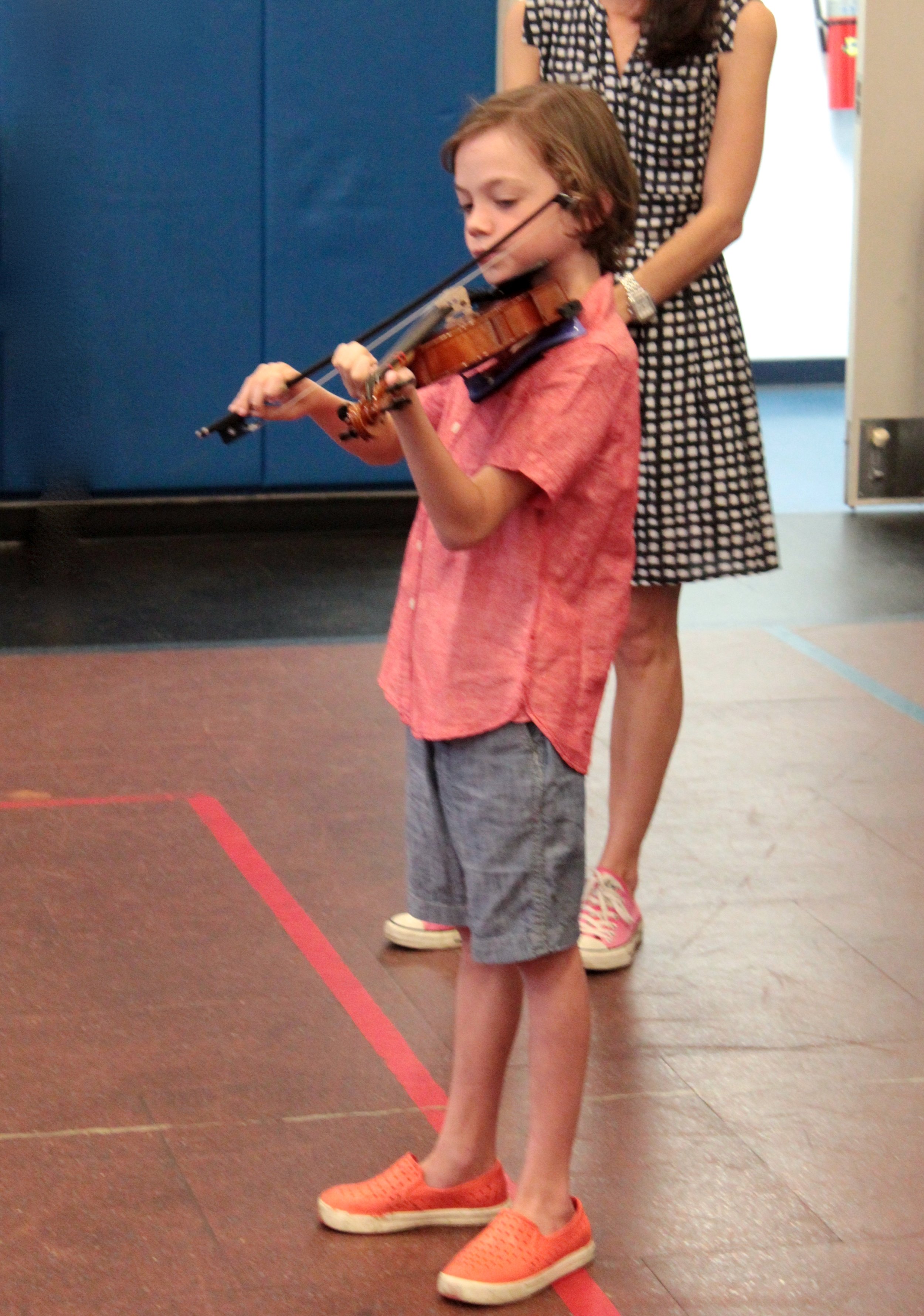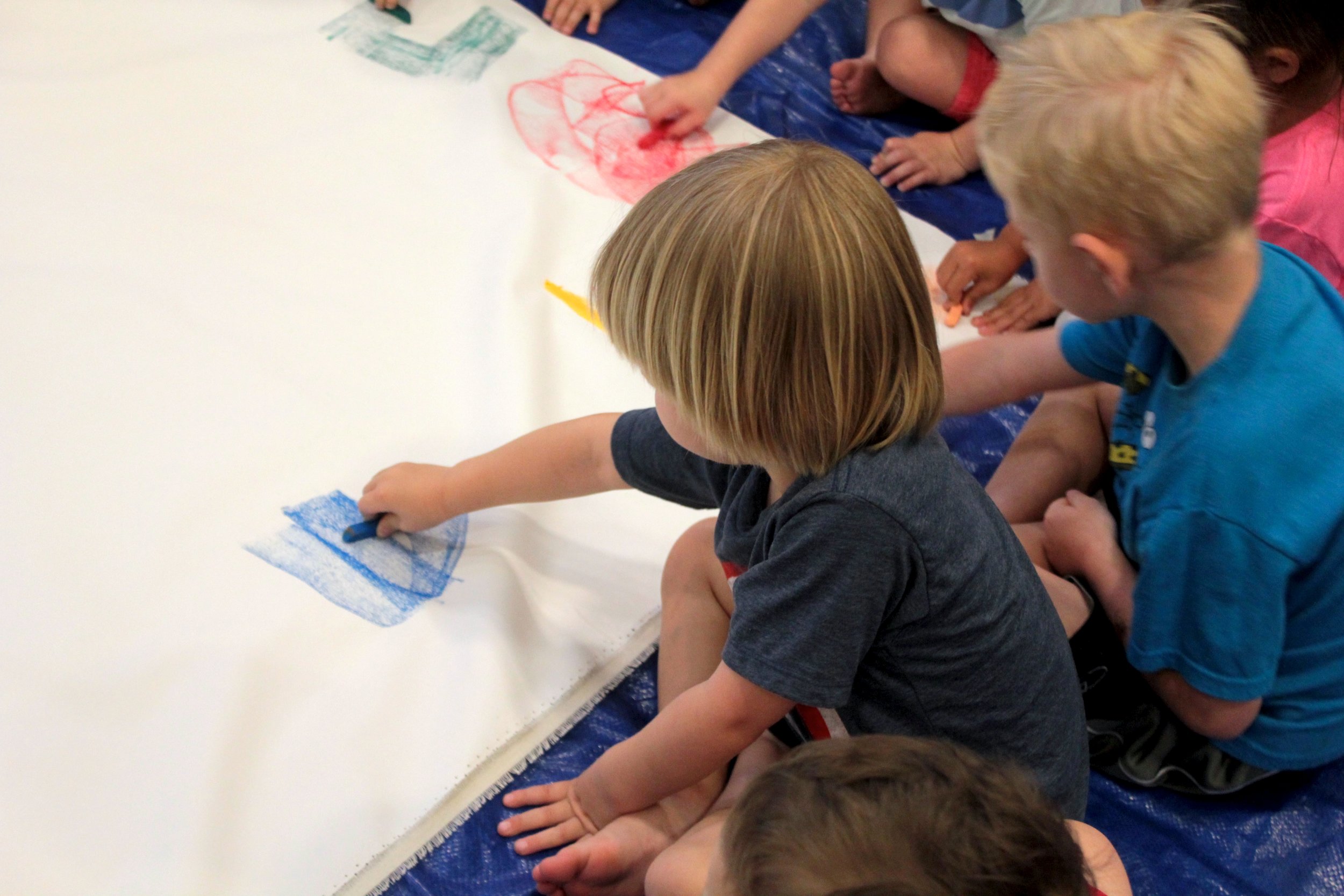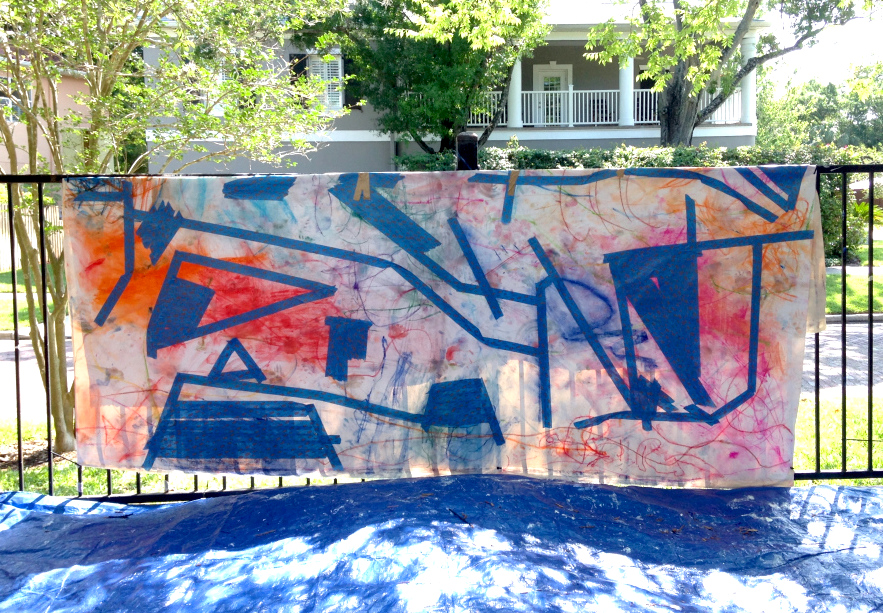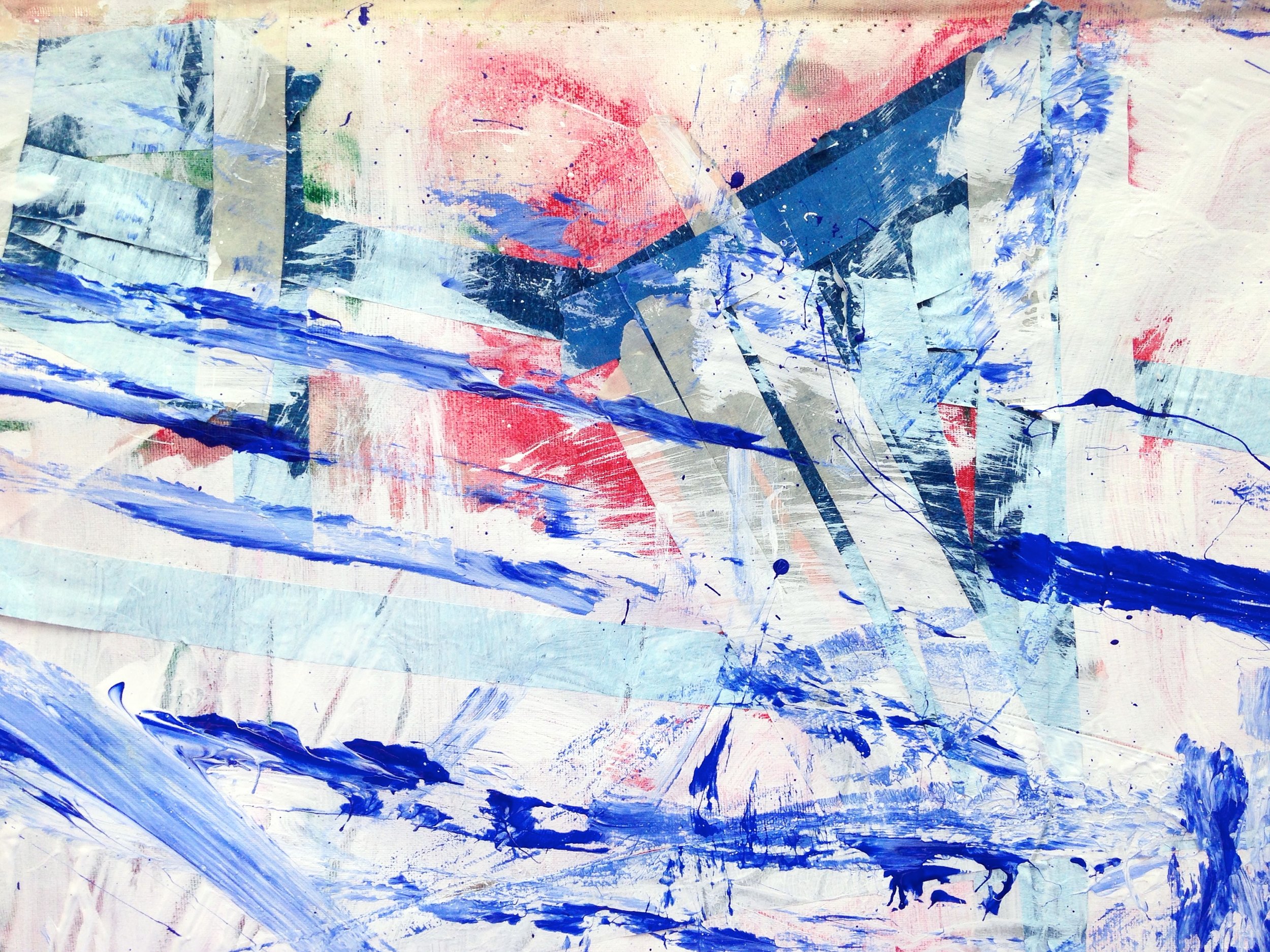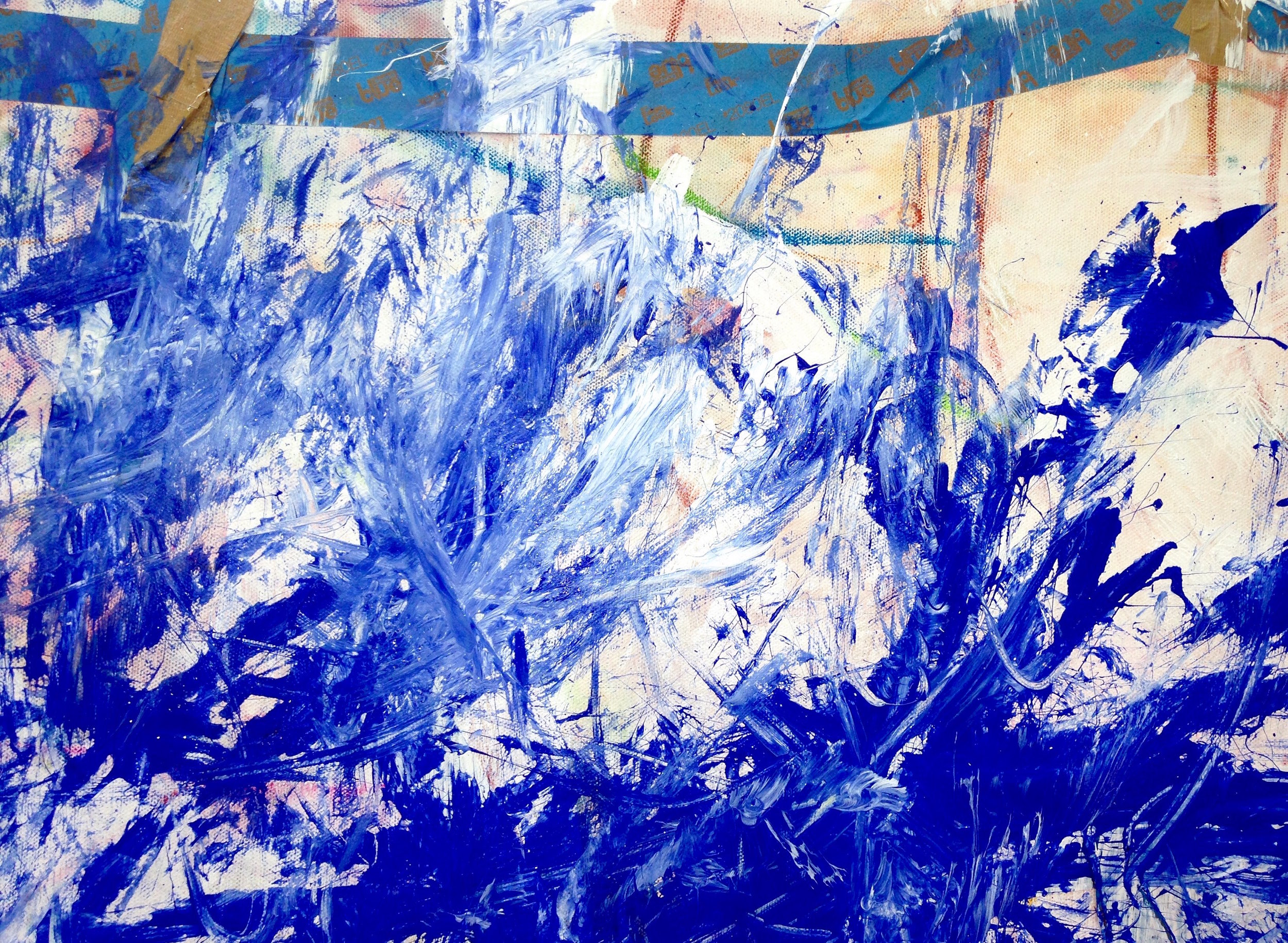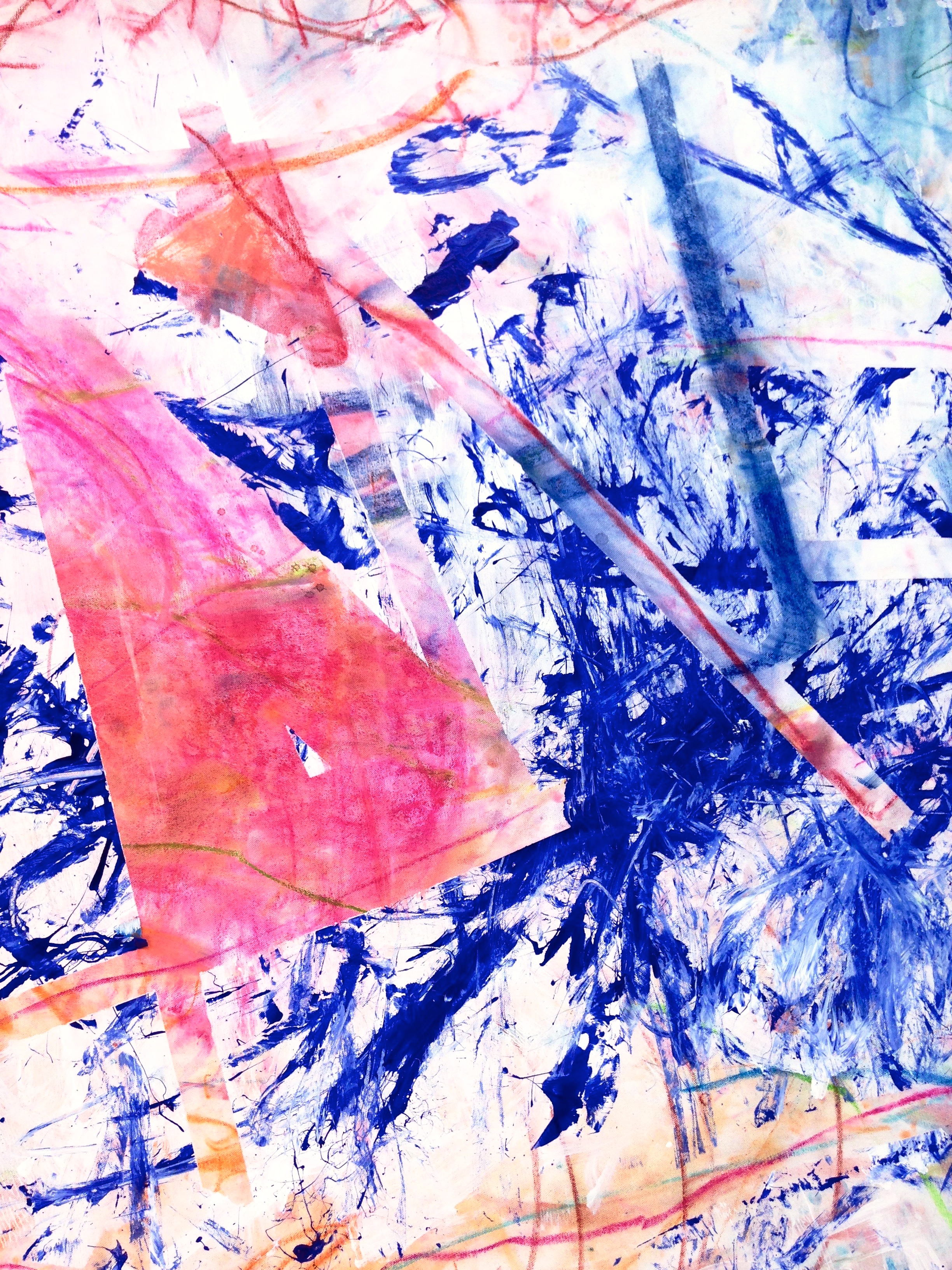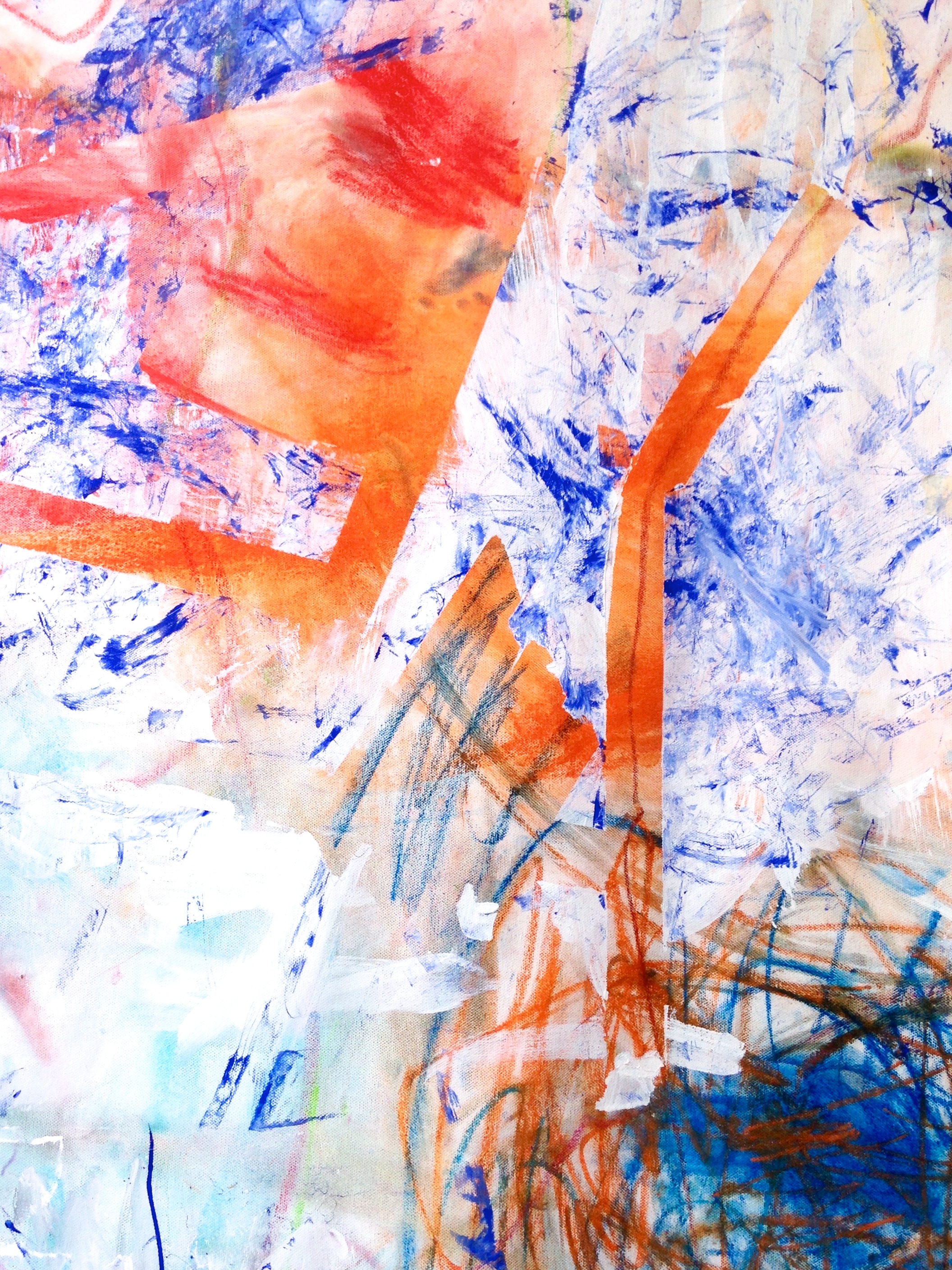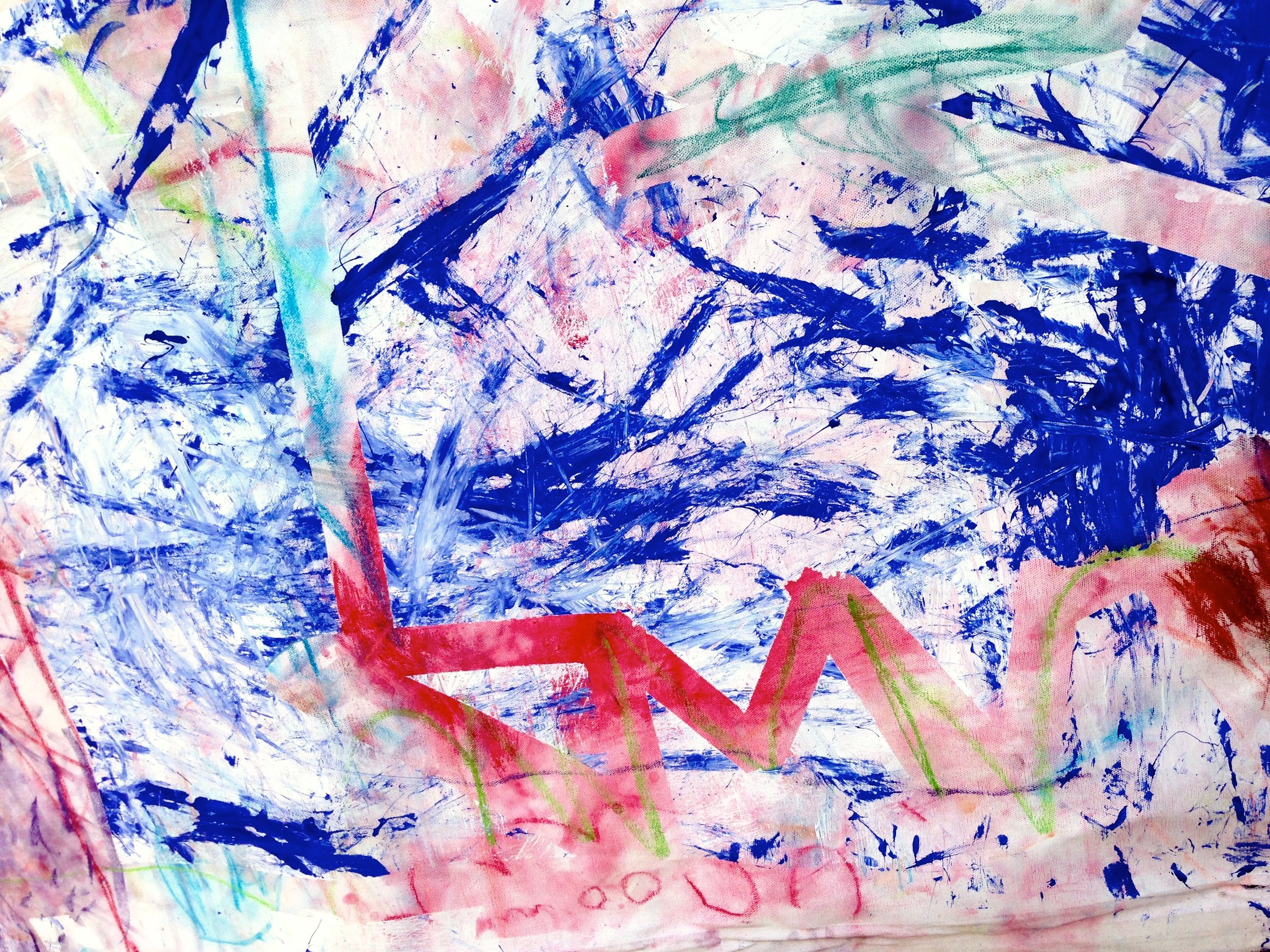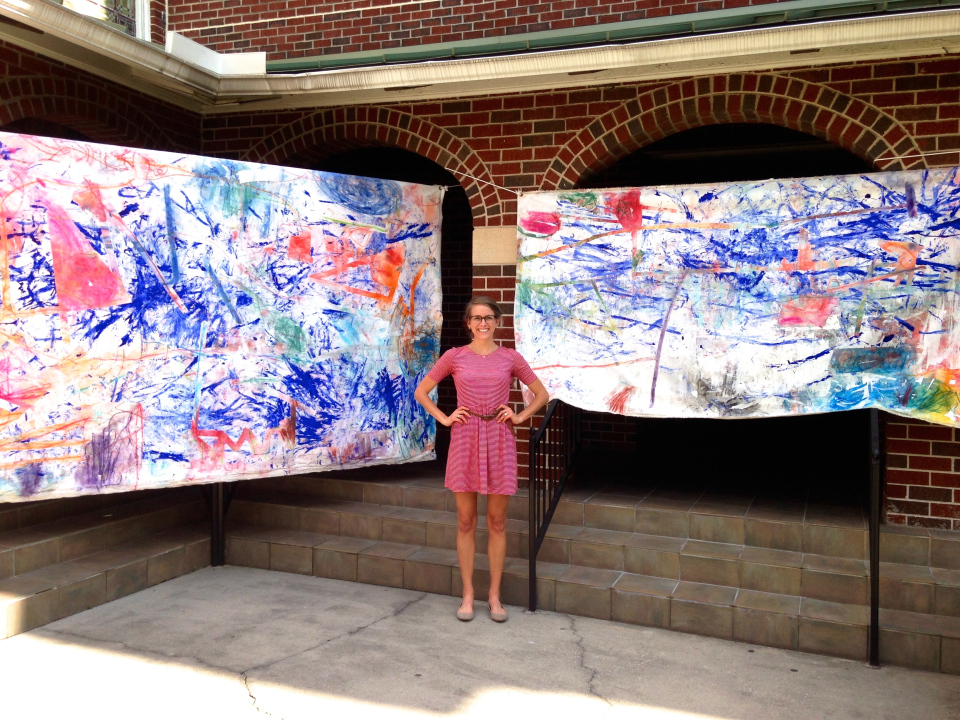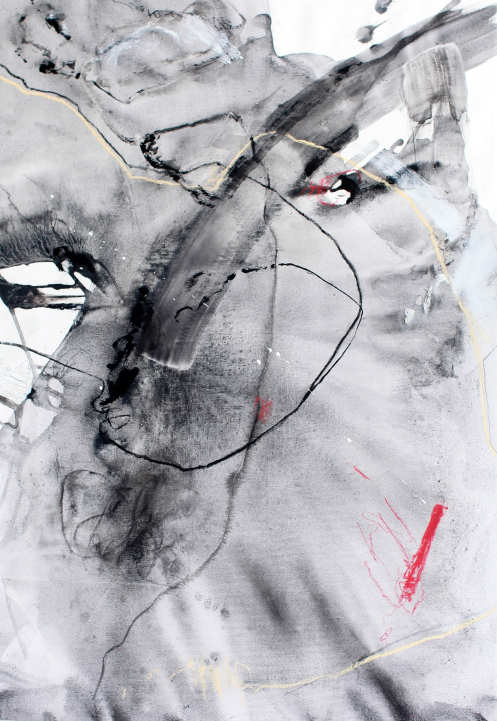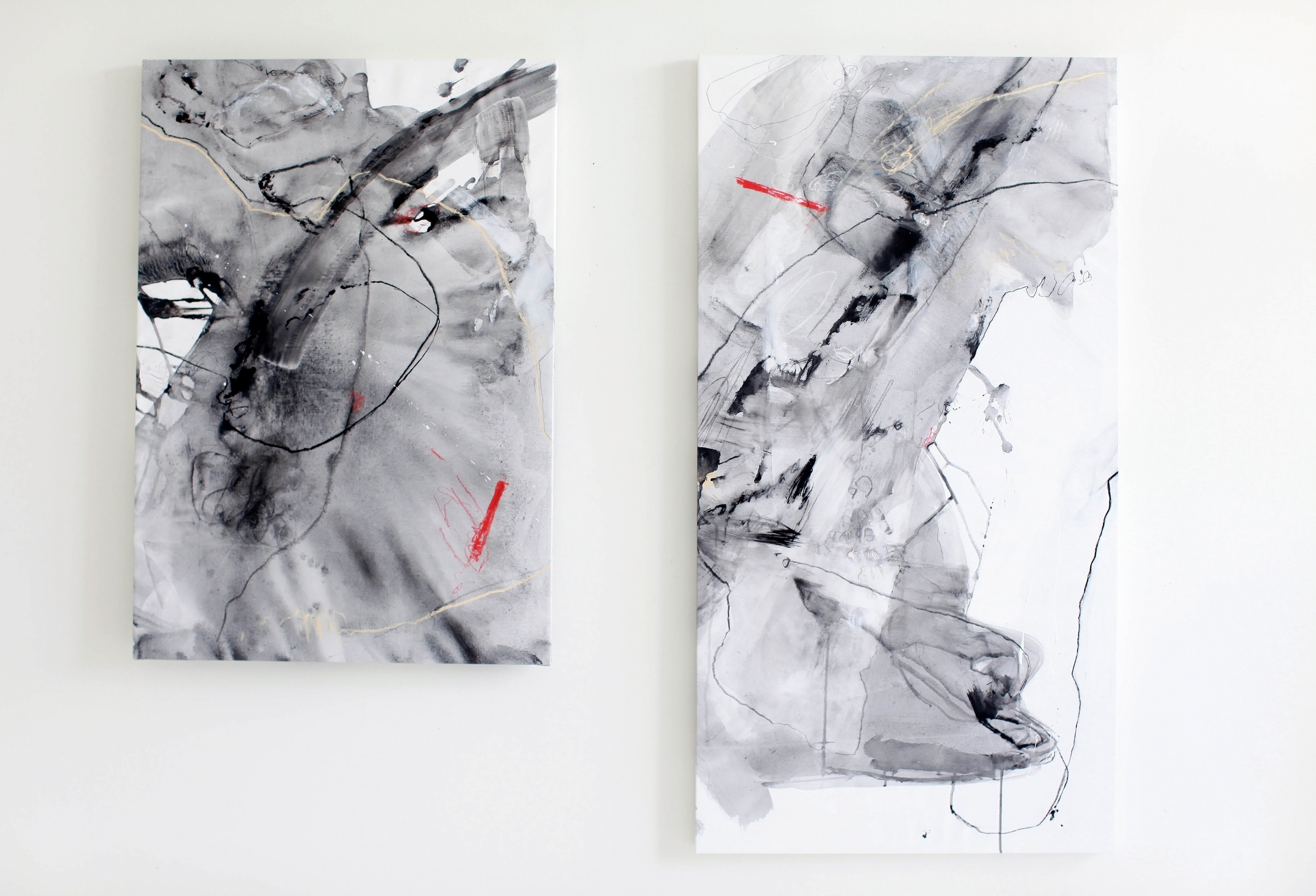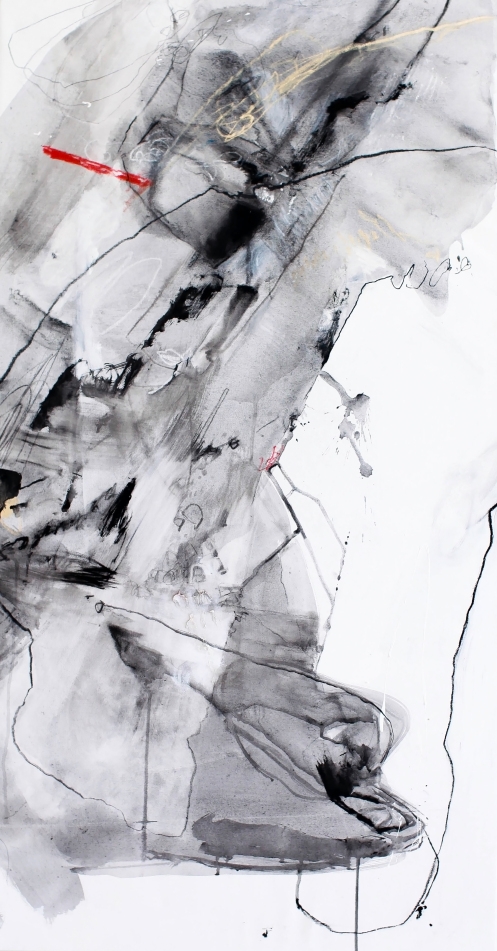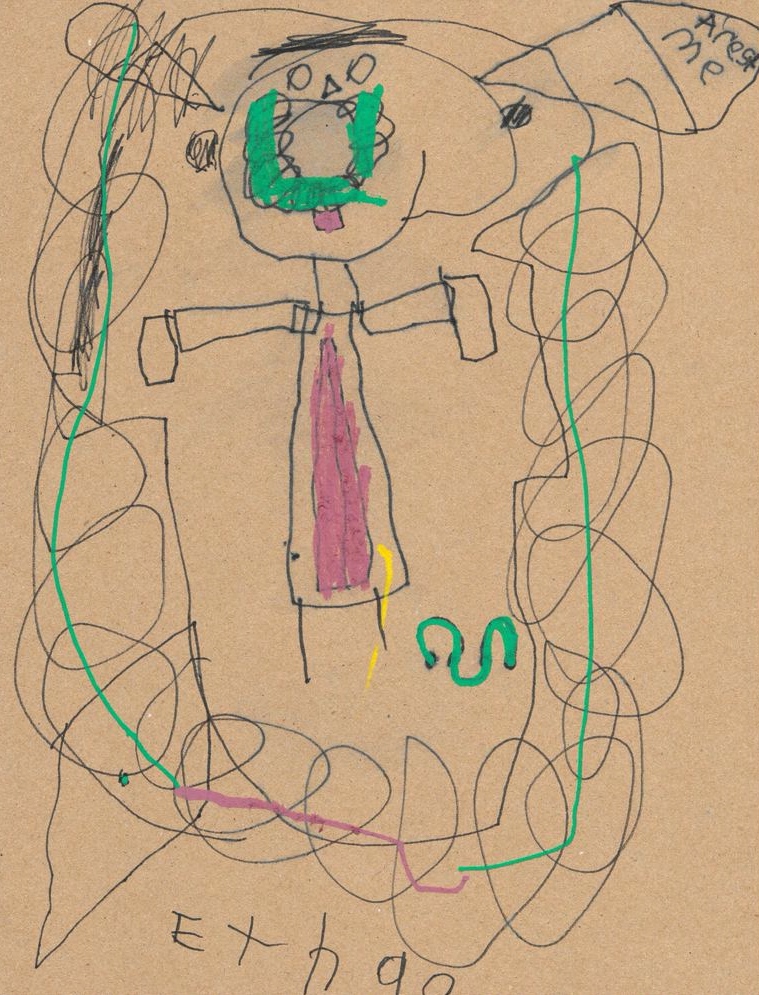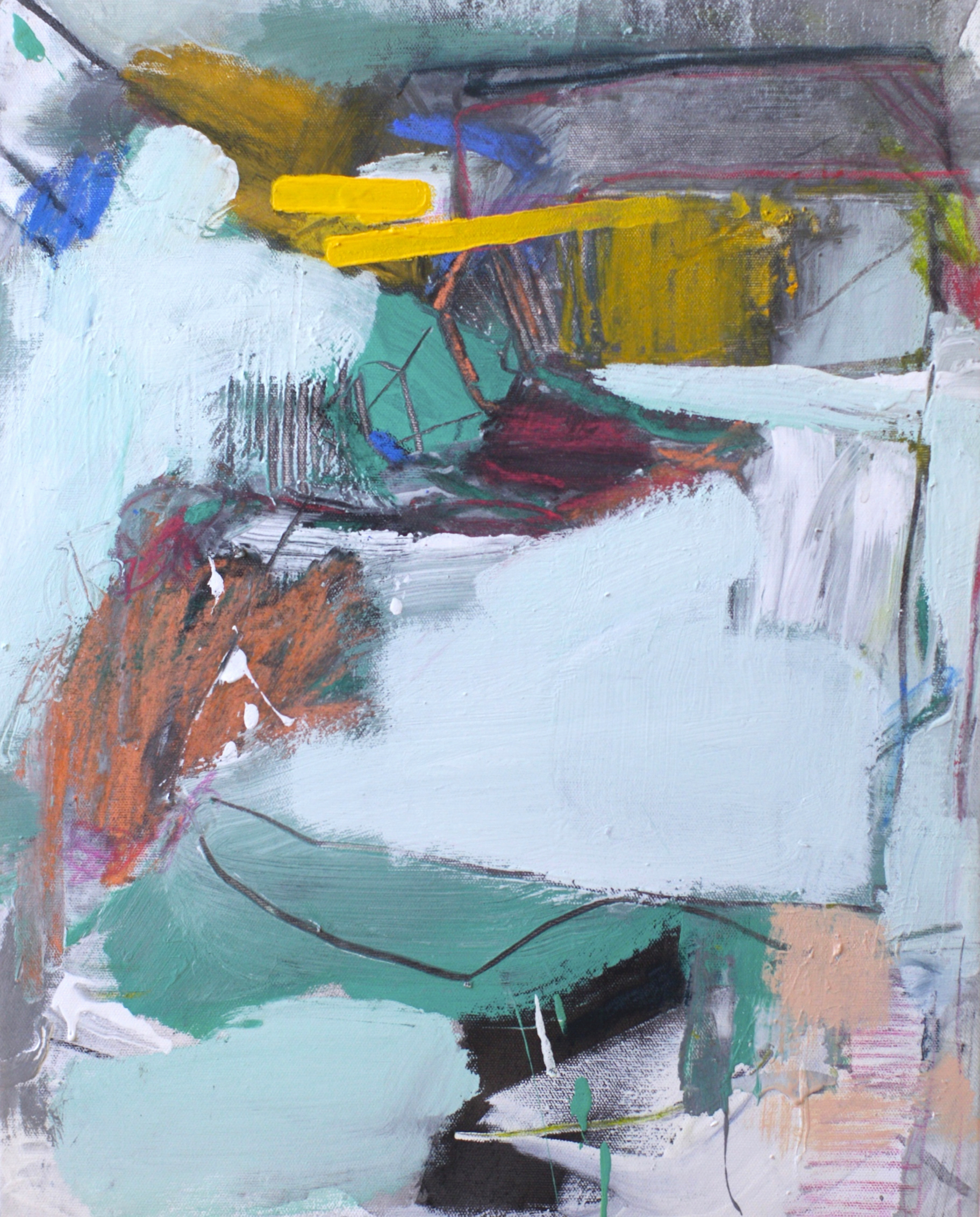Collaboration
I welcome the chance to support communities (my own and those beyond my local reach) through collaborations, exhibitions, and discussions about how art can serve a transformative purpose and instigate change. Please contact me with your ideas or inquiries about how we can work together.
Examples of past collaborations and projects below:
Artists for Change NOW in collaboration with TheCAD
Summer 2020
In June 2020, TheCAD founder, Julian Lombardi, initiated a fundraising project called Artists for Change NOW in an effort to support BIPOC artists and to collectively fight systematic racism. I was eager to take part and become one of the many artists who are demanding change, donating one of my paintings titled “Ziplocked Content” as a first step. But the efforts cannot and will not stop there; this project and those involved will continue to pursue ways of investing ourselves and our practices into the people and causes that can truly instigate positive transformation in the communities around us. As mentioned in the project’s press release:
“Because art is an essential service that helps to document, define, and shape our culture, it is critically important to support the development of a racially and economically diverse cohort of young artists to ensure our future is shaped by all communities… We recognize that the amount of support we have for this project is much greater than the art that we have to offer. We hope that this project gives you energy to continue to fight racism within your own communities, and to continue efforts for broad structural change.”
To read the full press release, please click here. To inquire about available works or get involved, feel free to contact TheCAD directly (thecad@thecad.org).
Countdown to a Cure NYC for Nephcure Kindey International
November 10, 2017
On November 10, 2017, hundreds of New York's corporate, entertainment, and philanthropic leaders brought friends and family to Pier Sixty, Chelsea Pears, to raise funds and awareness for Nephcure Kidney International (NKI). As always, I was moved to tears as I sat listening to patients (elementary ages to adults) share their stories of how they have endured Nephrotic Syndrom and FSGS—and have harbored unbelievable hope and strength in the process.
It was a true gift to be able to share my own version of storytelling by incorporating six artworks into the event. Since meeting my husband, Will—below is a photo of him and me at our annual Pig Jig for NKI—and learning of his fight against FSGS, there has been a growing desire in me to find some way to help him. I can't take away the 30+ hours he spends at dialysis each week, or the myriad of medications packed into his blue pill box everyday day. I can't take away his cramping legs at 2am, his "dialysis hangovers" that come hours later, or his water weight-, potassium-, blood pressure-, and hemoglobin-fluctuations that he can recognize through the taste of metal in his mouth or the shift of his mood. I can't take away the extra time I know he wishes he could have, to write, to kayak, to learn how to run more than a mile (you'll get there, boy!) or simply to rest. It is an understatement to say that when Nephcure gave me something I CAN do, I felt more joy than I can explain. I owe them much thanks, not just for the research, fundraising, and awareness they do, but for the simple gestures of making patients and their family members (like Will, like me) experience more I can's than I cannot's.
Bare Minimum Violet was one of the first works I selected to show alongside the other amazing auction items of the night. In brainstorming the other paintings to include in the gala, I knew immediately that my bar paintings could begin to make visible the complexity of disease (and the hope amidst it) that I wanted to vocalize. Take a look at the final works:
These are the words I wrote to accompany my paitnings at gala exhibition:
...The longer I walk beside my husband as he fights against FSGS, the more I find myself yearning for ways to utilize my creativity as a mode of supporting him (and others like him). Nephcure Kidney International not only provides a sense of community, hope, and determination among patients, but it has also serves as an outlet through which friends and family members, like me, can raise awareness and funding for those they love. It is, therefore, with immense honor and gratitude that I present this collection of paintings.
The five pieces selected for this Countdown to a Cure exhibition come from my most recent series entitled “Wild Things”. Throughout this body of work, one can see traces of physical, mental, and emotional expressions of self. My human gestures were laid upon paper, and then placed in conversation with rigid bars and linear forms. The lines imposed upon each painted surface allude to the literal and metaphorical hindrances placed upon us in every day life. What if we could learn to see past these bars, our stumbling blocks, and embrace life in their midst?
In thinking about the trials that patients, families, researchers, and even Nephcure faces, I see these images as chances to reiterate an uplifting and necessary truth: that the restrictions set upon, within, and around us are not permanent, but permeable —we can and will push through them. This gala is a time for individuals to come together to believe in, fund, and support the mission of dismantling the bars of disease and celebrating the lives among them.
It is only by confronting the things that stand in our way that we are able to find their cure.
I am excited that introducing artwork into this gala event means also extending the chances for others to feel like they can do something to help those effected by these rare kidney diseases, too. If you want to purchase any of the works still available, a portion of sales will continue to benefit Nephcure! Please feel free to contact me for inventory inquiries and information.
Artist Residency on how Preschoolers are "Making (Meaningful) Marks"
May, 2016
For three weeks, I have had the privilege of working with some amazing artists. I guided them through the development of two large paintings, emphasizing a process based on following personal instinct above following another person's direction. These artists created with their minds, hearts, and bodies, and I tried to soak up something that radiated from within them—a freedom that most adults can’t access. I entered this Artist Residency as the “Teaching" Artist, but I quickly learned that my students, the Preschoolers, were the artists from whom I should take notes.
Yes, these masterful creators are the three and four year-old students of Palma Ceia Presbyterian Preschool. This outlet for supporting my community has, without a doubt, been one that has equally supported me. My hope in highlighting their creative process is that we, artists and viewers with a few more years on us, would glean from the authenticity and pure expressionism embedded in children's marks. Here is what our time together entailed:
PAUSING AND SEEING
The beginning of the Preschoolers' process was all about sight and the use of the mind to imagine and explore visuals. We reflected on two of my recent paintings, Leaning In and To Abundance, by digging into the simple question: What do you see? The answers presented didn't disappoint: a purple river, a scratchy bridge, a boat sailing into a city, and a transformer.
LAYING EMOTIVE LINES
While these objects were certainly entertaining to take in, I pushed the kids to go a bit deeper, exploring the emotions embedded in the visuals. What do you feel? Each child began eagerly drawing lines based on the emotions within them. Live music accompanied the Preschoolers as they used pastels to saturate their canvases with intuitive marks. It was an overall sensory experience, leaving not one ear, elbow, knee or belly out of the process—and the kids' donned colorful stains to prove it.
KEEPING MARKS (temporarily) HIDDEN and PAINTING WITH THE BODY
It was soon time for me to preserve some of those initial drawn elements. Lines and scribbles and remnants of fingers and feet were pressed into the weave of each canvas. I spent time selecting the areas that would be kept unpainted. I “protected” certain marks with a fancy repellent I like to call tape, while leaving other sections open for our next medium: the paint.
Boy, did these kids maximize on their opportunity to move. After exploring physicality—from stretching to twirling—with an experienced dancer, the Preschoolers headed for their canvases with eagerness. They embraced their own physicality and unique modes of putting paint to surface. A myriad of studio (and Preschool-safe) tools were dipped in white and blue: brushes, brayers, ribbons, and hands. Until that moment, I had never seen a little girl so forcefully swing a paint-dipped ribbon; it was her sword, and she coveted the minutes she had to show the canvas her strength. I admired at her, quietly wondering if Joan Mitchell may have carried a similar spirit as a child. [Side note: Artsy's Joan Mitchell page also provides great insight into this artist's work and legacy.]
TAKING TIME TO TITLE
I challenged the Preschoolers to enter one final step of creation by returning to the mental space where it all began. The act of seeing—not just glancing, but opening our eyes to both the intricate and the wide-swept marks around us—is an easy one to skip. Even kids can get caught scrolling rapidly through life, so we made sure to repeat the practice of pausing. What do you see in your works? What can you feel? What do you hope for others to experience?
Happiness, joy, and “rainbow twirls” were a few of the many repeated answers that came out these Preschoolers’ mouths, and so came their masterpiece titles. The two paintings are now confidently known as Happy Twirls and Glad Rainbow Stretch. And as much as those words make me giggle, their unhindered and honest simplicity is just the refreshment the adult in me needs.
To learn more on volunteer or programming opportunities with the kids and community of PCPC, visit: http://palmaceia.org.
Paintings speak to the "Realities of Being Human"
January, 2016
I have recently spent lots of time working on applications for upcoming exhibitions around the U.S. and overseas. The show entry processes are always ones that leave me drained of logistical effort, but filled with fresh words for explaining my works to a diverse audience. Sometimes, we receive opportunities to serve community in practical, measurable ways—whether it be via monetary donations, time-based services, or awareness raised on behalf of a cause. Today, however, I am using this post to acknowledge the truth that the sharing of personal experiences can be an equally valuable means of fostering healing, encouragement, change, and connection among individuals.
With that, I leave you with the following insights behind three pieces that I created during the past year. The works are part of my series called Autobiographies. My hope is not that every viewer would grasp the ins and outs of my marks and their meanings, but instead that my paintings would generate emotion, vulnerability, and truths that give others a chance to release their walls, too. If you relate closely to my images and words, I'm excited to share that commonality. And if you pause with the feeling that it's all unfamiliar, I'm grateful to get to be your taste of "something different." It is a gift to find ways to relate to each other, but I think community thrives most when we can pause, converse, and expand through our differences.
Mercy Over Rules was created in an attempt to simultaneously acknowledge and overturn my modes of control. I spent four hours splashing and moving with my materials on the floor, and this canvas became laden with residue of mixed media and of me. As the painting neared its completion, it felt as though it was radiating out the realities of my personal issues with my body, with OCD, with constant production, and with time. I asked myself, "How, when, and in what ways could this piece renew me and others, coinciding with that promise of “new mercies each day”1? The reason I sewed rulers, tires, and tape into the fabric of this canvas, was because I needed to fight against my battles for the day, and to receive mercy for the losses that I did (and will continue to) encounter. Most of all, however, I needed to remember that systems of measurement, movement, and protection can be deconstructed, and we can thrive all the more without them. Rather than presenting a crisp, traditional painting around stretcher bars, I veer away from historical rules of display, opting instead to present an installation that mirrors humanity—an ever-changing, always-tugging, mercy-needing humanity.
1: Lamentations 3:22-2
How I Hold It is a painting that hinges (literally and figuratively) upon the beliefs, forces, and truths that seem to be beyond human grasp or logic. The canvas itself is a representation of humanity—worn, expressive, and attached to its unwinding baggage. "My baggage," in the case of this piece, is a wad of used exercise bands, incorporated to denote my experiences with feeling enslaved to exercise, physical labor, and thought-patterns based on the false idea that worthiness can be earned. Wherever the piece may hang, these bands will add to its weight. Though the main form, the canvas, demonstrates a capability of holding itself and its baggage together, the irony comes upon recognizing the delicate cord running through and stretching with it. Were it not for this thin, elastic force and its ability to move with the piece that it holds, its counterpart would fall. So often we associate strength with boldness, with dominance, and with self. The strongest aspect of this artwork, however, is not intrusive and is not fighting for attention. It supports humbly and quietly. As you consider this piece and its implications, I hope you are encouraged to also consider the uplifting force in your own own life—perhaps a god, or a goal, or an entity you have yet to name. (Check out the video documentation of this piece in process here).
Suffering Stand utilizes the dichotomies of black versus white, bold form versus thin line, and dark versus light, to evoke the paradoxes involved in suffering. It is easy to reflect on my own story when it comes to suffering—not because I am overwhelmed by a negativity associated with my painful moments, but because I am overwhelmed by the fact that my painful moments are drenched (beautifully and always unexpectedly) with growth and value. I know that I am not the only individual who has encountered this paradox of pain. Friends, co-workers, and family members have stories that are equally marked by their ongoing resilience through personal battles. So, this work is not so much an uncovering of some new epiphany about surviving pain, but instead a celebration of those who have suffered gracefully for years longer than I have. This piece is an expression and hope: of the strength that can come from apparent weakness, and the stand that one can take to move joyously amidst an unbearable circumstance.
For more information on this series or to keep the conversation going, feel free to reach out to me!
What it means to be "torn," on Sobremesa Stories
June, 2015
I was recently given the opportunity to feature some words and images on a blog that not only taps into the perspectives of womanhood, but reveals the ups and downs that it involves. Sobremesa Stories was founded by a dear friend and also admirable teacher, scholar, and wife, Lauren English. One of my favorite aspects of living my life as an artist is getting these chances to share my thoughts alongside my visual iterations of them. A big thanks to Lauren and her audience for listening as I discuss what it meant to be and to make Torn. Here is an excerpt of the piece:
Being torn is being okay.
Torn, Between what I can see and what I cannot Between what is and what isn’t Between longing and satisfaction Between prayer and praise Between the embark and the arrival Between who I am and who I will be tomorrow And the next day And the next day In-between.
...My body and my mind are not made to be stagnant. Are we made to be stilled? —Yes. Made to know peace? —Yes. But made to be stagnant would require a stripping of an intrinsic longing for growth—and this, we all have.
I think everyone can resonate with the feeling of wanting to grow. Mine, particularly, felt like a thirst for more—a “more” I couldn’t describe, but wished to grab. Art has been an increasingly life-giving process over the past two years, and I have grown into a style and voice that I can call “my own.” There has always been this bigger vision for my work, and my purpose, that I have been given glimpses of—whether it be through the power of dialogue surrounding a piece, or other artists who have made marks on the world. I see the way a mark on a canvas can make a mark on a person. My heart pounds for that impact. I want to grow past the boundaries that any state of stagnancy would allow. Hence I made my choice:
I will move.
To read more of the visual story, or to contribute your own thoughts and experiences for those who may need to read them, visit: Sobremesa Stories.
Influenced Art: a child's perspective of present Africa
November 11, 2014
I am grateful for the opportunity to join lower-school students, national and international artists, and Warehouse242 members in a creative effort to support Rwandan communities. 41 local 1st-7th graders in Charlotte, North Carolina recently participated in a workshop that challenged them to create artwork inspired by Rwandan artifacts. They were not only educated on current conditions abroad, but asked to speak and act in response through visual creation. Each student's piece was then digitally sent to a group of nearly 50 professional artists around and outside of the U.S. We saw a child's perspective through artwork, and subsequently created our own pieces in return. It was moving. It was jarring. It was, and is, beautiful to see the comparison of works.
An upcoming exhibition at Warehouse 242 Gallery will open on November 13, 2014. Student and artist works will be displayed side-by-side, so that viewers may see an image of Rwanda from a multitude of perspectives. A percentage of sales proceeds will act as the church's "income generating activity" for these communities they've chosen to support. Below is further information on the project as a whole, as well as my painting and the drawing by Ethan that inspired it:
When I saw the image and text included in Ethan's drawing, I was overcome by the innocent, sheer honesty of his work. The words, "arrest me" repeated in my head as I began approaching my own responsive piece. I allowed myself to contemplate the meaning behind his words, and to follow the rawness of his wiry lines and bold, child-chosen colors. My piece is a glimpse into how Ethan's work did "arrest me," and also an embodiment of the many dimensions of the word "arrest," as an action and a condition. My hope is that amidst the turmoil and confinement in their suffering, the people of Rwanda would know hope—just as bold pops of color breathe life into dark places. As for us: I pray these sorts of stories would always jolt and arrest us into action, that we would give our brothers and sisters abroad a rest and an aid in their trying.
Below is a text by Warehouse242 that further explains this project and effort:
We believe that when neighbors in fragile communities can engage in meaningful work, it not only upholds their dignity as humans, but it also keeps neighbors from engaging in high-risk activities. In Rwanda, boredom, hopeless and despair often lead toward high-risk sexual encounters, thus adding fuel to the HIV/AIDS fire. In West Charlotte, unemployment and lack of opportunity enhance the threats of gangs, prostitution, and unplanned teenage pregnancies.
Our aim with the IGA (income generating activity) is to rejuvenate West Charlotte and West Rwanda through exceptional coffee, grown at the Cyimbili plantation (pronounced chim-billy). By increasing demand for this wonderful coffee, we are ensuring that the Cyimbili farmers are getting top-dollar for their crop. This means more workers at the plantation can earn a solid income; more children can then attend secondary school (not free in Rwanda); and more families in the neighboring community can have access to clean water, medical care, and spiritual community.
If we can steadily increase demand for Cyimbili-grown coffee, our goal is to one day roast this coffee here in West Charlotte, and use the coffee enterprise as a springboard for job training. This means our at-risk West Charlotte neighbors can participate in jobs such as coffee roasting, sales, fulfillment, cupping, marketing, and business development. This is the "full circle" we are aiming to achieve with this IGA.


